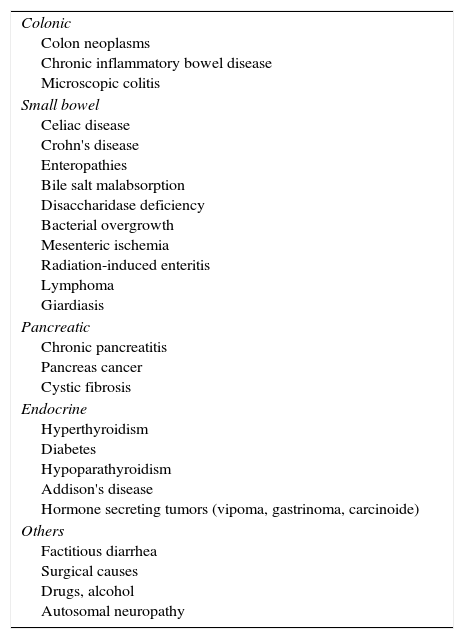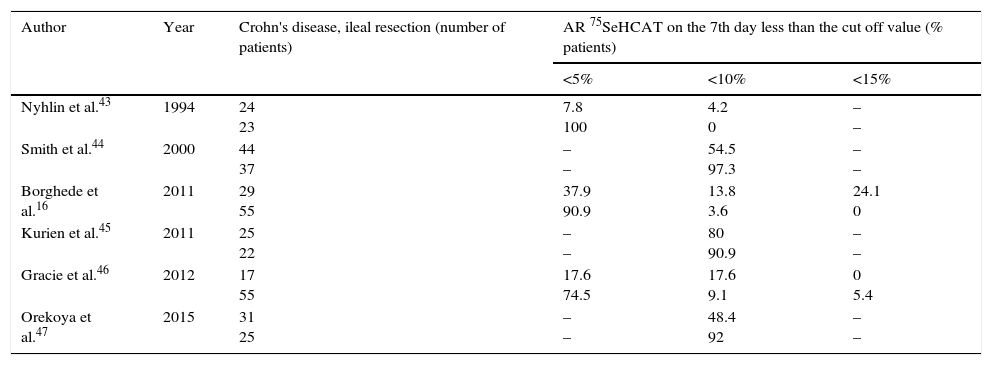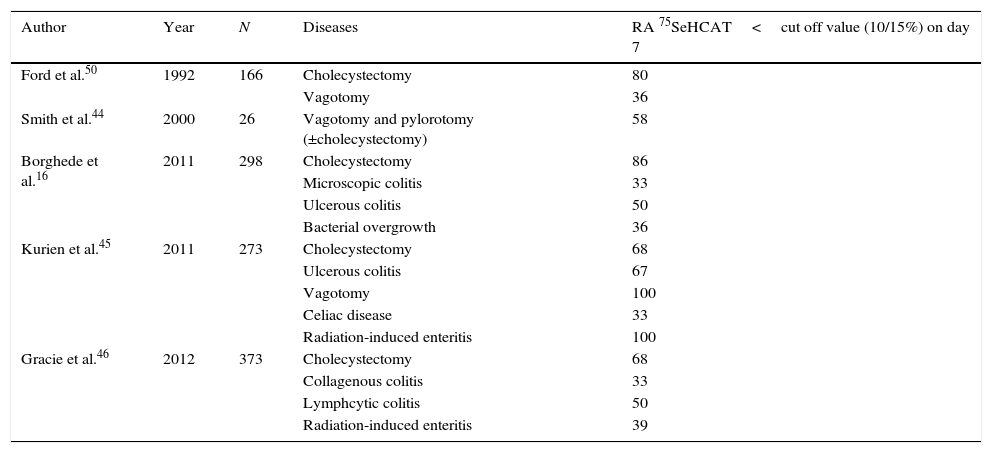Chronic diarrhoea is a common entity in daily clinical practice and it leads to a loss in these patients quality of life. It may be the main symptom of multiple ethiologies including bile acid malabsorption (BAM) which has a comparable prevalence to celiac disease. The BAM results from imbalances in the homeostasis of bile acids in the enterohepatic circulation. It can be a consequence of ileal disease or ileal dysfunction (BAM type i), it can be considered idiopathic or primary (BAM type ii) or associated with other gastrointestinal entities (BAM type iii). Among the different diagnostic methods available, 75SeHCAT study is the primary current method due to its sensitivity, specificity, safety and low cost. The main disadvantage is that it's not available in all countries, so other diagnostic methods have appeared, such as serum measurement of FGF19 and C4, however they are significantly more complex and costly. The first-line treatment of bile acid diarrhoea is bile acid sequestrant, such as cholestyramine, which can be difficult to administer due to its poor tolerability and gastrointestinal side effects. These are less prominent with newer agents such as colesevelam. In summary, the BAM is a common entity underdiagnosed and undertreated, so it is essential to establish a diagnosis algorithm of chronic diarrhoea in which the 75SeHCAT study would be first or second line in the differential diagnosis of these patients.
La diarrea crónica es una entidad común en la práctica clínica diaria y supone un deterioro en la calidad de vida de los pacientes. Puede ser el síntoma principal de múltiples etiologías, entre las que se encuentra la malabsorción de ácidos biliares (MAB), que en la población general presenta una prevalencia comparable a la enfermedad celíaca. La MAB ocurre por una alteración en la homeostasis de los ácidos biliares en la circulación enterohepática. Puede aparecer como consecuencia de una disfunción o enfermedad ileal (MAB tipo i), por causas idiopáticas (MAB tipo ii) o asociada con otras entidades gastrointestinales (MAB tipo iii). Entre los diferentes métodos diagnósticos disponibles destacamos la gammagrafía con 75SeHCAT como gold standard debido a sus valores de sensibilidad, especificidad, seguridad y bajo coste. La principal desventaja es que no se encuentra disponible en todos los países, por lo que se han desarrollado otros métodos como la medición sérica de FGF19 y C4 que, sin embargo, presentan una mayor complejidad y coste. El tratamiento de primera línea ante un diagnóstico de MAB es con quelantes de ácidos biliares como la colestiramina, pero presenta baja tolerabilidad y efectos secundarios, que son menores con los nuevos fármacos como el colesevelam. En resumen, la MAB es una entidad común que se encuentra infradiagnosticada e infratratada, por lo que es fundamental establecer un adecuado algoritmo diagnóstico de la diarrea crónica en el que el estudio con 75SeHCAT ocuparía la primera o segunda línea en el diagnóstico diferencial de estos pacientes.
Article
If you experience access problems, you can contact the SEMNIM Technical Secretariat by email at secretaria.tecnica@semnim.es or by phone at +34 619 594 780.

Revista Española de Medicina Nuclear e Imagen Molecular (English Edition)













